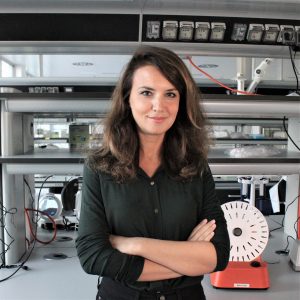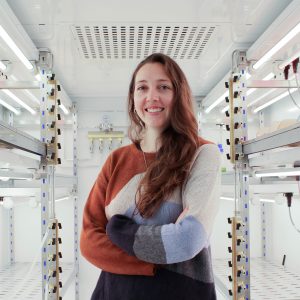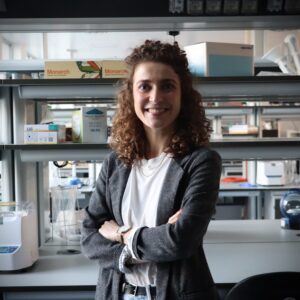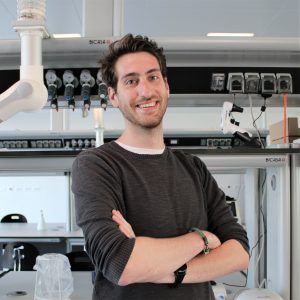
Pigino Group
Cells need to be able to sense different types of signals, such as chemical and mechanical signals, from the extracellular environment to properly function. Most eukaryotic cells perform these functions through a specialized hair-like organelle, the cilium, that extends from the cell body as a sort of antenna. The signaling and sensory functions of cilia are fundamental already during the early stages of embryo development, when cilia coordinate the establishment of the internal left/right asymmetry typical of the vertebrate body. Later, cilia continue to be required for the correct development and function of specific tissues and organs, such as brain, heart, kidney, liver, and pancreas. Sensory cilia eventually allow us to sense the environment that surrounds us, for instance we see through the connecting cilium of photoreceptors in our retina, we smell through the sensory cilia at the tip of our olfactory neurons, and we hear thanks to the kinocilium of our sensory hair cells. Motile cilia, which themselves have sensory functions, also work as propeller-like extensions that allow us to breath, because they keep our lungs clean, to reproduce, because they propel sperm cells, and even to properly reason, because they contribute to the flow of cerebrospinal fluid in our brain ventricles. Not surprisingly, defects in the assembly and function of these tiny organelles result in devastating pathologies, which are collectively known as ciliopathies. Thus, proper function of cilia is fundamental for human health.
The Pigino Lab investigates the biology and the 3D molecular structure of ciliary components in their native cellular context and in isolation, to understand how they orchestrate cilia-specific functions. Our work positions itself right at the interface between structural biology and molecular cell biology. Hence, we combine the latest tools and methodologies from both fields, from cryo-electron tomography, over correlative light and fluorescence microscopy (CLEM), to in vitro reconstituted dynamic systems, genetics, biochemistry, image analysis methods, all the way to more classical cell biology.
Our ultimate goal is to understand the underlying molecular mechanisms of ciliary functions and dysfunctions, so that possible therapeutic strategies for ciliopathies can be developed.

ERC funded project (ERC-2018-COG N#819826 CiliaTubulinCode)
Self-organization of the cilium: the role of the tubulin code
Our current knowledge of the basic principles which lead to self-organization of cellular organelles is quite limited. Hence, our project aims at understanding the role of the tubulin code for self-organization of complex microtubule based cellular structures, with the focus on the structure of the cilium.
Group members
-
 Gaia Pigino
Gaia Pigino
Associate Head of Structural Biology Research Centre -
 Gonzalo Alvarez Viar
Gonzalo Alvarez Viar
Postdoc -
 Paola Capasso
Paola Capasso
Senior Technician -
 Rubina Dad
Rubina Dad
Postdoc -
 Helen Elizabeth Foster
Helen Elizabeth Foster
Postdoc -
 Malina Karen Iwanski
Malina Karen Iwanski
Postdoc -
 Nikolai Klena
Nikolai Klena
Postdoc -
 Samuel Edward Lacey
Samuel Edward Lacey
Postdoc -
 Giovanni Maltinti
Giovanni Maltinti
PhD Student -
 Adrian Pascal Nievergelt
Adrian Pascal Nievergelt
Scientific Visitor
Publications
-
05/2024 - Current Opinion in Cell Biology
Tubulin posttranslational modifications through the lens of new technologies
The Tubulin Code revolutionizes our understanding of microtubule dynamics and functions, proposing a nuanced system governed by tubulin isotypes, posttranslational modifications (PTMs) and microtubule-associated proteins (MAPs). Tubulin isotypes, diverse across species, contribute structural complexity, and are thought to influence microtubule functions. PTMs encode dynamic information on microtubules, which are read by several microtubule interacting proteins and […]
-
01/2023 - Nature Structural & Molecular Biology
The molecular structure of IFT-A and IFT-B in anterograde intraflagellar transport trains
Anterograde intraflagellar transport (IFT) trains are essential for cilia assembly and maintenance. These trains are formed of 22 IFT-A and IFT-B proteins that link structural and signaling cargos to microtubule motors for import into cilia. It remains unknown how the IFT-A/-B proteins are arranged into complexes and how these complexes polymerize into functional trains. Here […]
-
11/2022 - eLife
Integrative modeling reveals the molecular architecture of the intraflagellar transport A (IFT-A) complex
Intraflagellar transport (IFT) is a conserved process of cargo transport in cilia that is essential for development and homeostasis in organisms ranging from algae to vertebrates. In humans, variants in genes encoding subunits of the cargo-adapting IFT-A and IFT-B protein complexes are a common cause of genetic diseases known as ciliopathies. While recent progress has […]
-
10/2022 - Annu Rev Cell Dev Biol
Structural Biology of Cilia and Intraflagellar Transport
Cilia are ubiquitous microtubule-based eukaryotic organelles that project from the cell to generate motility or function in cellular signaling. Motile cilia or flagella contain axonemal dynein motors and other complexes to achieve beating. Primary cilia are immotile and act as signaling hubs, with receptors shuttling between the cytoplasm and ciliary compartment. In both cilia types, […]
-
09/2022 - Current Biology
Conversion of anterograde into retrograde trains is an intrinsic property of intraflagellar transport
Cilia or eukaryotic flagella are microtubule-based organelles found across the eukaryotic tree of life. Their very high aspect ratio and crowded interior are unfavorable to diffusive transport of most components required for their assembly and maintenance. Instead, a system of intraflagellar transport (IFT) trains moves cargo rapidly up and down the cilium (Figure 1A).1, 2, 3 Anterograde IFT, from the cell body to the […]